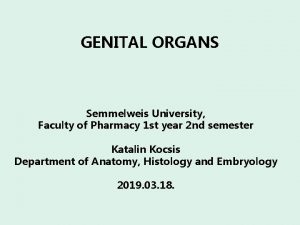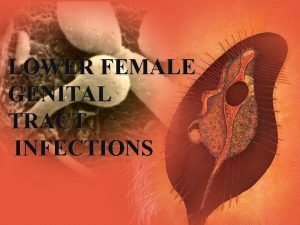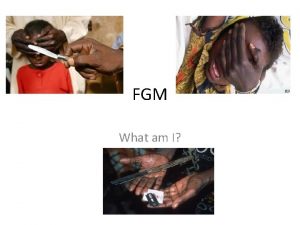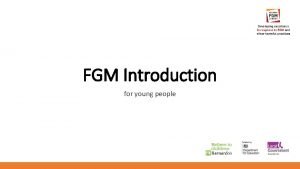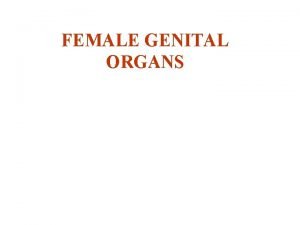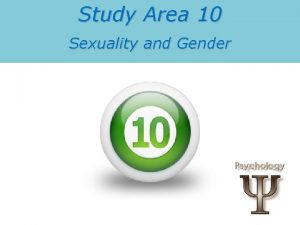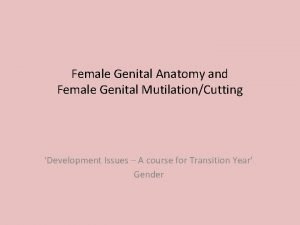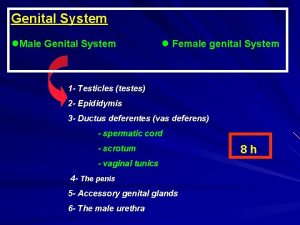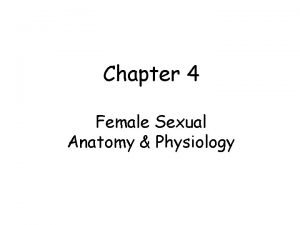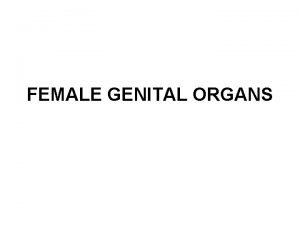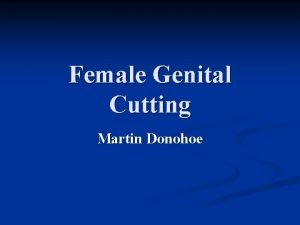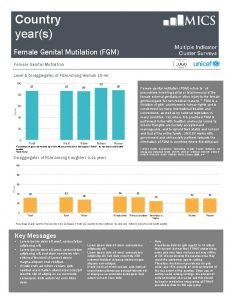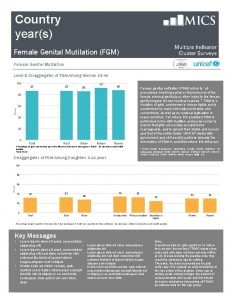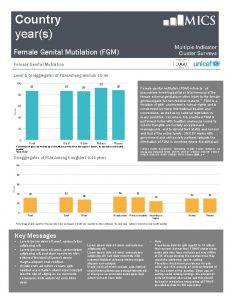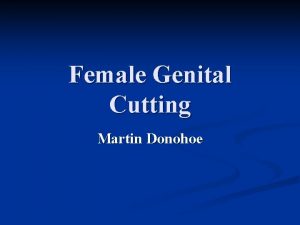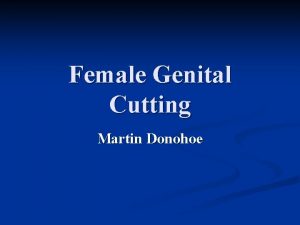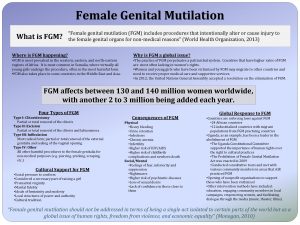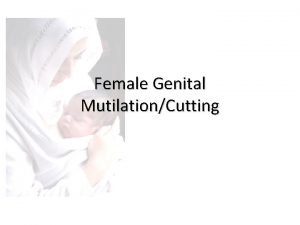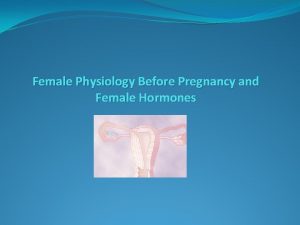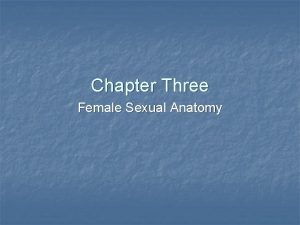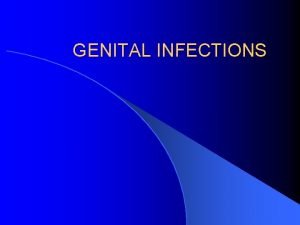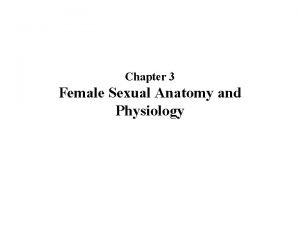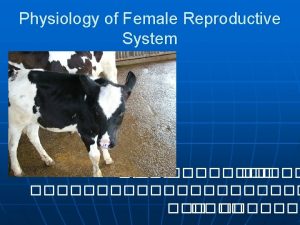Chapter 3 Female Sexual Anatomy and Physiology Genital



























- Slides: 27

Chapter 3 Female Sexual Anatomy and Physiology

Genital Self-Exam • Purposes of self exams – Increases sexual comfort – Monitor for changes related to health concerns

The Vulva • External female genitalia • Mons veneris • Labia majora • Labia minora

The Vulva

The Clitoris • Only function is sexual arousal • Clitoral stimulation most common way women achieve orgasm • Female genital mutilation

The Underlying Structures of the Vulva

The Vulva • Vestibule (inside the labia minora) – Urethral opening – Vaginal introitus (opening) • Hymen • Perineum – Episiotomy

Underlying Structures • Vestibular bulbs • Bartholin’s glands • Pelvic floor muscles – Kegel exercises

Underlying Structures

Internal Structures: Vagina • 3 layers: mucous, muscle, fibrous • Arousal and vaginal lubrication – Lubrication changes vaginal p. H and increases pleasure • Grafenberg (G) spot • Secretions & chemical balance

Internal Structures

Internal Structures • Cervix • Uterus – 3 layers and fundus • Fallopian tubes – Fimbriae • Ovaries – Up to 472, 000 immature ova at birth – 400 mature in lifetime – Ovulation is the release of ovum

Menstruation • Sloughing off of uterine lining • Myths and negative attitudes • Menarche (initial onset) – Age 11 -15 – Dependent on: • Heredity • Health • Altitude

Menstrual Physiology • Flow – lasts from 2 to 6 days • Volume – varies from 6 to 8 ounces • Duration – varies 24 to 42 days • Menstrual synchrony

Changes During the Menstrual Cycle

The Menstrual Cycle • Hypothalamus releases chemicals that stimulate pituitary • Pituitary produces – Follicle Stimulating Hormone – Lutenizing Hormone • Negative feedback mechanism

Three Phases of The Menstrual Cycle • Menstrual – Shedding of endometrium • Proliferative – Thickening of endometrium, follicle maturation & ovulation • Secretory – Corpus luteum development, further thickening of endometrium

Menstrual Cycle Problems • Premenstrual syndrome – Premenstrual Dysphoric Disorder (PMDD) • Dysmenorrhea – painful menses • Amenorrhea – no menses • Self-help for menstrual symptoms – Diet – Exercise • Toxic shock syndrome (TSS)

Menopause Terms • Climacteric – Physiological changes during transition period of fertility to infertility • Perimenopause – Time before menopause • Menopause – Permanent cessation of menstruation

Menopausal Symptoms • • • Amenorrhea, then menopause Hot flashes or warm spells Night sweats, interrupted sleep Headaches, poor concentration Depression, anxiety • Symptoms vary from mild to strong

Hormone Therapy • Estrogen – Benefits/Problems • Progesterone – Benefits/Problems • Testosterone – Benefits/Problems • Bioidentical Hormones

Gynecological Health Concerns • • Urinary tract infections Vaginal infections Pap smear screens for cervical cancer Hysterectomy or oophorectomy – Most frequently performed U. S. operation – More frequently performed on low income, less educated women – Non-surgical options

The Breast • • Secondary sex characteristics Mammary glands produce milk Areola is darker area Nipple is in center of areola & has openings for milk

Cross-Section of Breast

Breast Exam: Part 1

Breast Exam: Part 2

Breast Health • Breast Lumps – Cysts (fluid-filled sacs) – Fibroadenomas (solid, round, benign tumors) – Malignant tumor • Breast cancer – – Treatments Risk factors Reconstructive breast surgery Benefits of early detection & treatment
 Mackenrodt's ligament
Mackenrodt's ligament Women anatomy
Women anatomy Cyclic vulvovaginitis
Cyclic vulvovaginitis Female genital mutilation
Female genital mutilation What does fgm mean
What does fgm mean Function of fallopian tube
Function of fallopian tube Chapter 14 anatomy and physiology
Chapter 14 anatomy and physiology Chapter 1 introduction to human anatomy and physiology
Chapter 1 introduction to human anatomy and physiology Anatomy and physiology chapter 8 special senses
Anatomy and physiology chapter 8 special senses Chapter 13 anatomy and physiology of pregnancy
Chapter 13 anatomy and physiology of pregnancy Anatomy and physiology chapter 2
Anatomy and physiology chapter 2 Anatomy and physiology chapter 7
Anatomy and physiology chapter 7 Chapter 14 the digestive system and body metabolism
Chapter 14 the digestive system and body metabolism Chapter 10 blood anatomy and physiology
Chapter 10 blood anatomy and physiology Anatomy and physiology chapter 15
Anatomy and physiology chapter 15 Necessary life functions anatomy and physiology
Necessary life functions anatomy and physiology Holes anatomy and physiology chapter 1
Holes anatomy and physiology chapter 1 Anatomy and physiology chapter 15
Anatomy and physiology chapter 15 Chapter 1 introduction to anatomy and physiology
Chapter 1 introduction to anatomy and physiology Chapter 2 human reproductive anatomy and physiology
Chapter 2 human reproductive anatomy and physiology Appendicular skeleton pectoral girdle
Appendicular skeleton pectoral girdle Chapter 6 general anatomy and physiology
Chapter 6 general anatomy and physiology 2012 pearson education inc anatomy and physiology
2012 pearson education inc anatomy and physiology Prostate glands
Prostate glands Common female sexual fantasies
Common female sexual fantasies Sex characteristics
Sex characteristics Upper respiratory tract labeled
Upper respiratory tract labeled Tattoo anatomy and physiology
Tattoo anatomy and physiology
